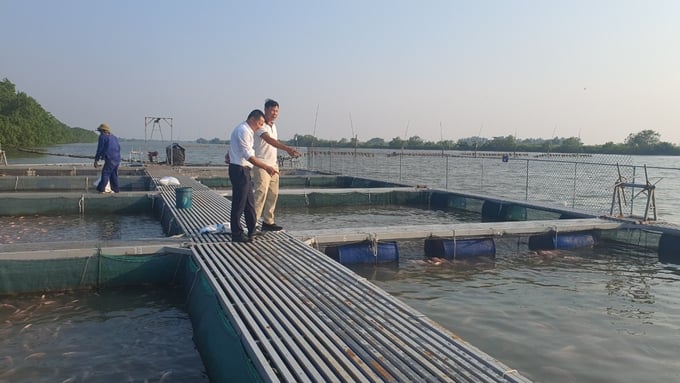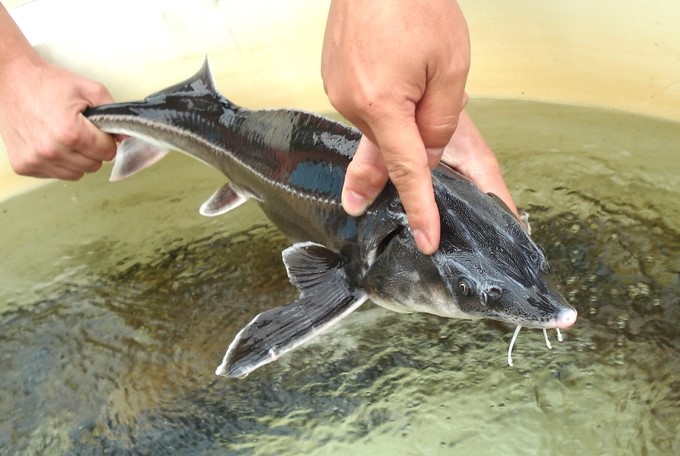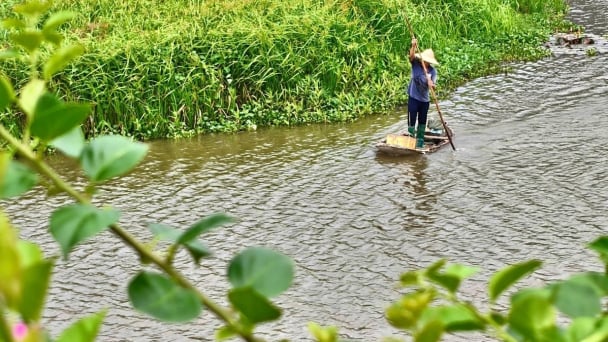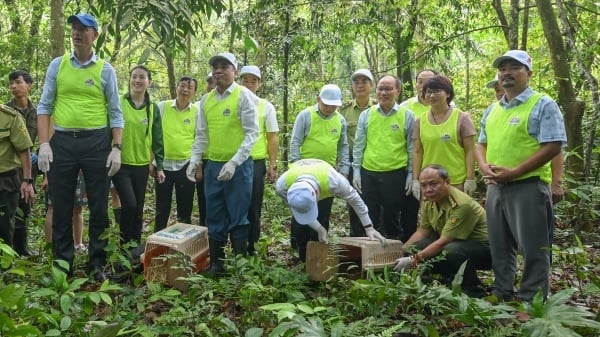May 24, 2025 | 16:25 GMT +7
May 24, 2025 | 16:25 GMT +7
Hotline: 0913.378.918
May 24, 2025 | 16:25 GMT +7
Hotline: 0913.378.918
According to the Research Institute for Aquaculture No. 1, Decision No. 434/QD-TTg dated March 24, 2021 of the Prime Minister approving the "Plan to prevent and control a number of dangerous diseases in farmed aquatic animals in the 2021-2030 period" pointed out a number of dangerous diseases in freshwater fish. These are TiLV disease, Streptococcus infection in tilapia, Spring viraemia of carp (SVC) disease, Koi herpesvirus (KHV) disease, and Infectious haematopoietic necrosis virus (IHNV) disease in salmon.
During the 2022-2024 period, results of monitoring pathogens on tilapia and red tilapia in the Northern region showed the circulation of dangerous pathogens. For periodic monitoring results, the rate of disease-infected samples was low for bacteria (3.2%), parasites (1.6%), TiLV (1.5%), and fungi (0.5%), respectively.

Traditional fish species such as carp, grass carp, hypophthalmichthys, mud carp, etc. are raised in cages on rivers, reservoirs, and ponds. Photo: Dinh Muoi.
Meanwhile, for samples with typical pathological manifestations such as haemorrhage, bulging eyes, decreased appetite, and fluid accumulation in the intestines, the highest rate of infection is for bacteria (51%), followed by parasites (23%), TiLV (18%), and fungus (the lowest of 8%). Dead fish appear sporadically throughout the year, concentrated in June-September.
In the 2022-2024 period, tilapia infected with TiLV was detected in Bac Ninh, Hanoi, Hai Duong, Yen Bai, and Vinh Phuc during the period from March to August. However, no disease or mortality was recorded when fish were infected with TiLV.
Traditional fish species such as carp, grass carp, hypophthalmichthys, mud carp, etc. are raised in cages on rivers, reservoirs, and ponds. Monitoring results in the 2022–2024 period showed that carp and grass carp infected with bacterial agents have circulating bacterial agents Aeromonas hydrophila and Aeromonas sobria, with infection rates of 18.56–21.94% and 3.23–6.59%, respectively. KHV agent was detected in carp at a rate of 2.73%. No samples of carp and grass carp contaminated with SVC were detected.
Coldwater fish include two main farming species: salmon and sturgeon. In the Northern region, fish are raised mainly in Lao Cai, Yen Bai, and Lai Chau provinces. In addition, coldwater fish are also raised in the Central Highlands.
Results of monitoring dangerous pathogens in coldwater fish in the 2023-2024 period showed that sturgeon and salmon are infected with all three bacterial genera: Aeromonas spp., Streptococcus spp., and Edwardsiella spp., with an infection rate of 2–36%. The bacterial agent Aeromonas spp. has the highest infection rate in salmon and sturgeon, which is 36% and 31.3%, respectively. Monitoring results also showed the circulation of the IHNV virus in salmon, with an infection rate of 5.6%.

Timely implementation of prevention and control of dangerous diseases in freshwater aquatic species helps create sustainable economic efficiency.
Some measures to prevent and control diseases in aquatic animals that need to be implemented timely include:
Seed quality is strictly quarantined (especially focusing on controlling imported seed sources such as sturgeon eggs, salmon, and unofficially imported seed sources, and controlling ornamental fish imports).
Strengthen monitoring, supervision, and warning of environmental quality in farming areas and monitoring pathogens. Guide on compliance with regulations and conditions of farming facilities (inlet water, wastewater, waste according to regulations, stocking season, etc.).
Propagate people to apply good pond management and care processes (VietGAP, GlobalGAP).
Continue to focus on research into the production of vaccines and herbal preparations to proactively prevent diseases and minimize antibiotics.
For coldwater fish farming areas, it is necessary to increase research on the application of recirculating farming systems to limit the impact of water shortages (in the North in February-May every year). Research on the production of biological preparations for coldwater fish farming and limit the use of antibiotics in disease treatment to limit the phenomenon of antibiotic resistance.
Translated by Thu Huyen

(VAN) In the tranquil wetlands of Van Long, there are quiet souls who guard the forests, nurture the waters, and oversee every bird and troop of langurs as protecting the essence of a living heritage.

(VAN) WWF, GIZ, IUCN, UNDP call for biodiversity conservation and sustainable development must be regarded as a unity in strategies for a green future.

(VAN) On celebration of International Day for Biological Diversity, Deputy Minister Nguyen Quoc Tri called for practical actions to address nature and biodiversity conservation.

(VAN) Dr. Hoang Thi Thanh Nhan – Deputy Director of the Nature and Biodiversity Conservation Agency – highlighted this on the International Day for Biological Diversity, May 22, 2025.
![Ho Chi Minh city adapts to climate change: [2] Accelerating action](https://t.ex-cdn.com/nongnghiepmoitruong.vn/608w/files/chiqk/2025/05/22/4024-4220-bien-doi-khi-hau-1-100626_766.jpg)
(VAN) Clearly recognizing the challenges posed by climate change, Ho Chi Minh city has swiftly shaped its policies and implemented practical solutions to adapt.

(VAN) Rice straw is no longer just a discarded byproduct, but it is becoming a green resource that helps farmers in the Mekong Delta reduce emissions and promote circular, sustainable agriculture.

(VAN) Other Effective Area-based Conservation Measures (OECMs) are solutions that contribute effectively to achieving the goals of the Kunming–Montreal Global Biodiversity Framework.